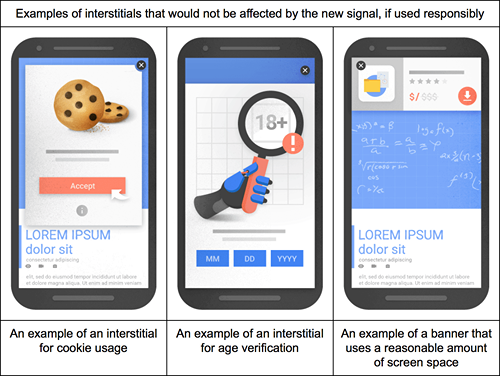GOOGLE GOES CRAZY ON INTERSTITIALS
June 8, 2015 by Paul Byrne
An interesting article from The SEM Post indicates that interstitials will begin to be penalized in search results. This will certainly throw a wrench in the works for pay-for-content or other companies whose business model relies on presenting an ad or collecting information before directing you to their content. Most online magazines use some form of this strategy.
Interstitials

From an ecommerce perspective, the author mentions, though not by that name, modals which are used to collect information from customers, such as email addresses or site registrations. This could be bad news for many online merchants?
Why?
Most online merchants know that email list growth is a critical component to their commercial strategy. Those who effectively use email and their sites to grow their lists, know that the modal has been one of the most effective ways to grow an email list.
The math is simple. If your conversion rate is 3%, you would build your email list by 3 each day. This is assuming all of your purchases are new customers and your traffic is 100 visitorsIf. By implementing a modal, you capture 5% of the remaining 97 visitors, you get four to five additional sign ups, an email address growth rate of up to 150% based on transactions alone. With motivation, you could even get up to a 10% rate, i.e., up to 10 additional email addresses to add to your marketing efforts.
If Google starts to penalize sites for implementing those modal pop ups (see the Hanger Project for an example), you may be trading organic traffic results for email address sign ups.
Our advice?
- If you use interstitials, replace them with modals.
- If you are using modal popups consider one of the following:
- Have the modal fire upon visit to a second page. NOTE: I’ve asked our in-house SEO expert to comment on this option in an update to this post.
- Replace the modal with another, built-in option, eg., a cheshire. You could also use other elements that are added to the HTML DOM post page-load.
- Have the modal fire only on ‘internal’ pages like category or product pages.
Do you use interstitials or modals heavily on your site? Would you like us to review your code for it’s potential impact? Give us a shout by phone or send an email to sales@razoyo.com.


